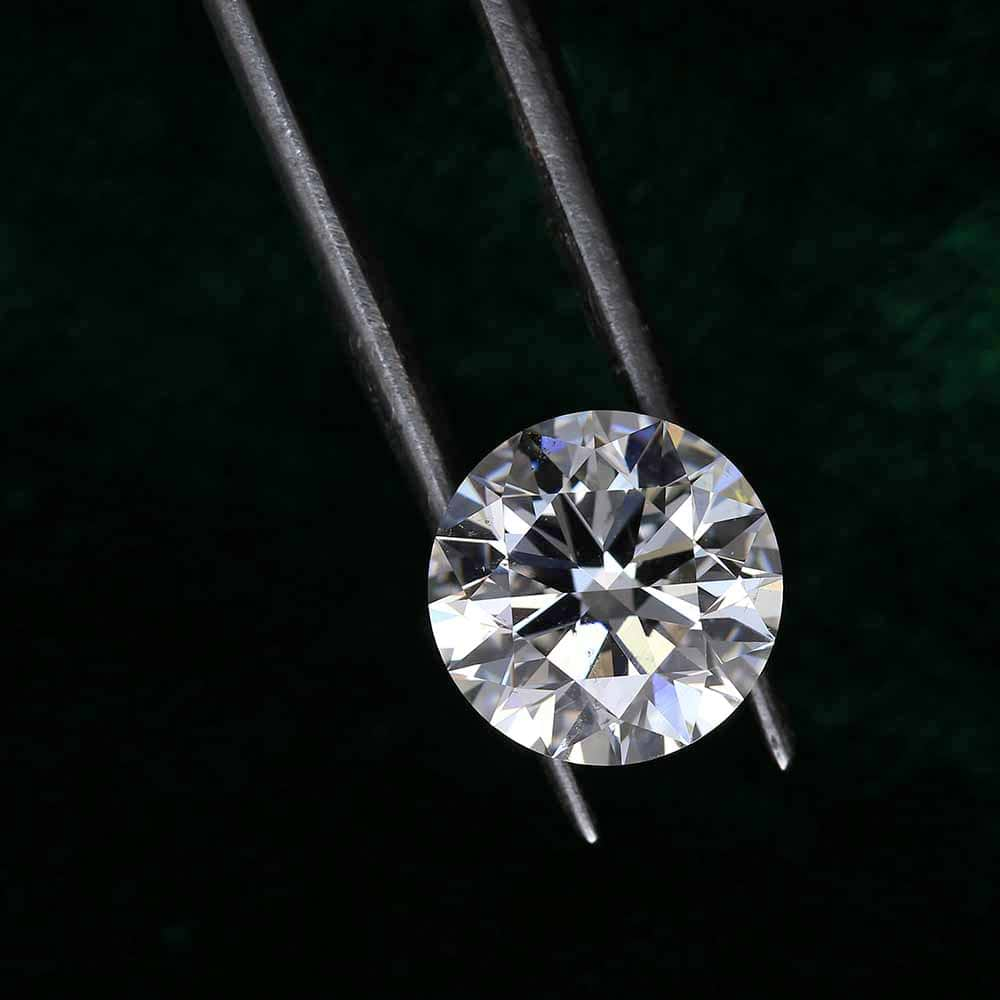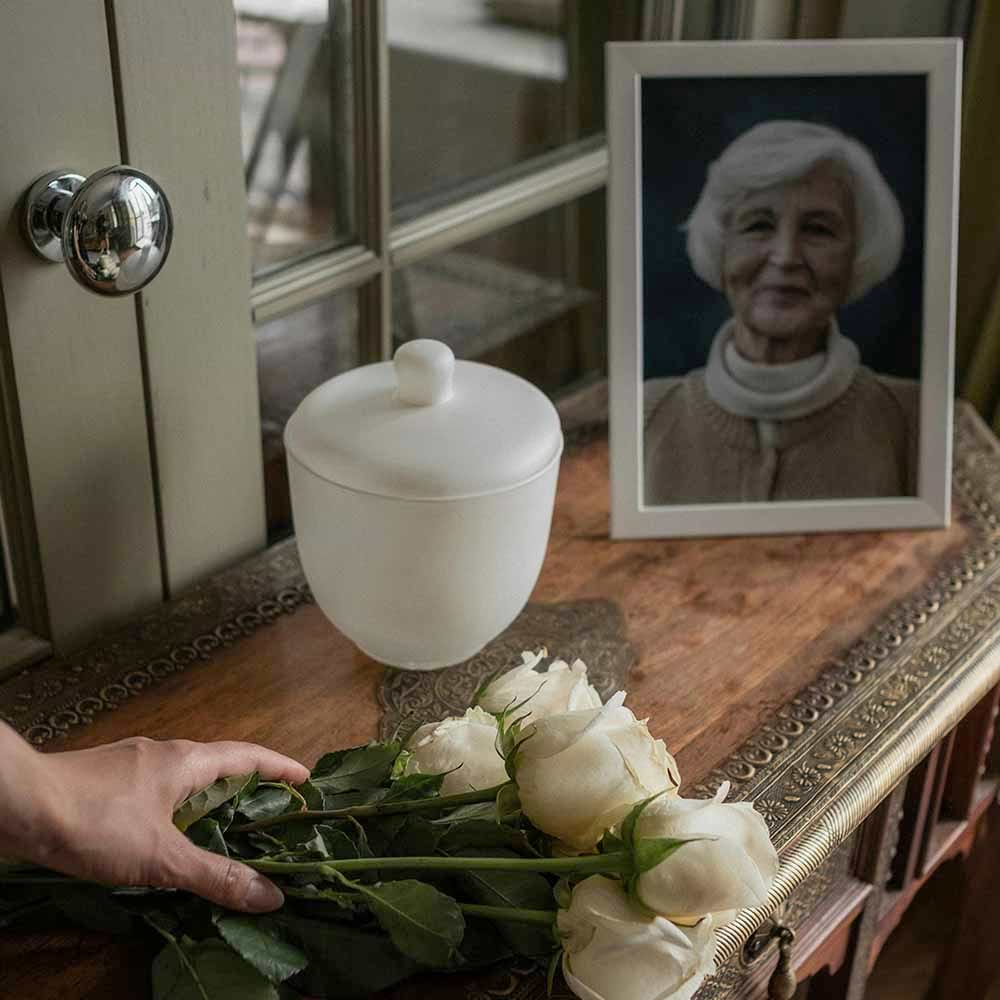Navigating through the stages of grief and facing the intense feelings associated with the death of a loved one is a difficult journey. However, an impressive transformation is occurring in how we can commemorate those who have departed — through the creation of cremation diamonds, also known as memorial diamonds, from cremated remains.
We'll discusses how we can grow diamonds in a lab that symbolizes someone's individuality using innovative scientific progress.
Kris Jenner — A Real Life Jewel?
Lab-grown diamonds have existed since the 1950s. However, cremation diamonds only started gaining popularity in the early 2000s because of their sentimental value and, more recently, Kris Jenner.
In 2018, on the show "Keeping Up With the Kardashians," Kris Jenner learned about turning ashes into a gemstone. The topic arose when a fan mentioned her grandmother's opal ring was actually her "Grandmother," and it started the conversation.
From Ashes to Brilliance: The Science Behind Human Cremains & Cremation Diamonds
Creating a diamond from human ashes is known as cremation diamond synthesis. It involves extracting carbon from the cremated remains — typically, only a tiny amount of ash is needed for the process, from 8 ounces up to a pound (225-450 grams). Then, along the same lines as how a lab-grown diamond is created, advanced technological methods are used to replicate the natural conditions of how diamonds are formed in the Earth's mantle.
As we have discussed in other blog posts, there are two approaches: High-Pressure High-Temperature (HPHT) and Chemical Vapor Deposition (CVD). Both methods enable scientists to produce diamonds in controlled laboratory environments that are chemically, physically, and optically identical to natural diamonds.
Why Do People Choose Cremation Diamonds?
There are a variety of reasons to choose to have a cremation diamond made with the cremains of a loved one — and all are deeply personal and meaningful.
Emotional Connection
Cremation diamonds offer a tangible way to keep a loved one close. They provide an enduring connection to a person's memory. Having a physical representation of the departed individual allows for a continued sense of presence and closeness.
A Symbol of Eternal Love
Diamonds are renowned for their durability and timelessness. As such, opting for a cremation diamond symbolizes the everlasting nature of the love and bond shared with the departed person or animal. It represents a love that will last forever — even beyond physical existence.
Personalized and Unique Tribute
Every person is unique in their life, and cremation diamonds can be completely customized in size, shape, and color. This personalization allows families to create a tribute that resonates with the personality and essence of their loved one, making it a truly special memorial.
Environmental Considerations
Lab-grown diamonds — on their own — are a sustainable and environmentally friendly choice in the realm of jewelry. This is especially true about cremation diamonds as they are seen as a more eco-conscious option when compared to traditional burial methods, which can involve embalming fluids, caskets, and cemetery maintenance.
Heirloom Value
Lab-grown diamonds that are turned into memorial stones can become cherished family heirlooms passed down through generations. These diamonds can provide a meaningful legacy and enable future generations to connect with their roots and recognize the importance of the departed loved one in the family's story and history.
A Coping Mechanism
Grief is a multi-stage process that never truly disappears — an individual simply learns how to live with it. However, creating a memorial diamond can offer a sense of purpose and help a person in mourning cope. Cremation diamonds allow people to channel their emotions into something positive while providing a tangible item that can be held close.
Ultimately, there are many reasons why a person might be interested in having a memorial diamond created after a loved one's passing — and truly, these stones are a testament to human innovation and ingenuity. A great appreciation is found in the fusion of advanced technology and tradition in preserving memories.
Is It Possible to Make a Diamond from Any Carbon Ashes?
Theoretically, any carbon-containing material could create a lab-grown diamond, including carbon ashes from organic matter, such as human or animal. However, transforming ashes to diamonds is highly controlled; therefore, purification is required to ensure the carbon being used is high quality. If the carbon contains contaminants, the diamond-making process could be interfered with, potentially compromising the quality of the produced stone.
With that said, let's address one popular question briefly.
Sometimes, individuals interested in having a cremation diamond ask if the stone can be made from hair. The short answer here is no.
Why? Because hair is composed primarily of keratin — a protein that does not contain carbon in a pure enough form to aid in the lab-grown diamond process.
Yes, hair does have some carbon in it, but not enough to make a diamond directly from this source. It is possible to extract carbon from hair and purify it. At the same time, that approach is highly complex and specialized — it is not commonly done.
Ultimately, when hair is referenced with any sort of memorial jewelry, it's important to note that this does not include cremation diamonds. Rather, hair might be placed inside a locket or a charm or in a small space inside the solid metalwork of a ring or other piece of jewelry — and then expertly sealed to enable its preservation.
How Much Carbon is Needed to Make a Cremation Diamond?
The carbon required to create a cremation diamond varies depending on the desired size and type. Generally, only a few grams of carbon are needed to produce a standard-sized lab-grown memorial diamond, usually around 0.5 to 1 carat in weight.
It's important to keep in mind that this amount of carbon typically is derived from the cremains of a person, and the amount of carbon can vary based on several factors. These factors include the individual's body composition, age at the time of death, diet, and other things, such as the cremation process followed by the crematorium.
Generally, human remains comprise approximately 18-25% carbon by weight. This carbon is derived from organic compounds in the body, including proteins, fats, and carbohydrates.
Remembering Our Four-Legged Loved Ones
Of course, experiencing loss and grief is not only inclusive of the passing of a parent, spouse, sibling, or other loved one. Rather, losing the companionship of a dog, cat, or other pet is equally as hard to face — and the mourning process is incredibly similar. Some people note it can feel harder to cope after the death of a pet simply because the relationship is so special.
As such, it is also possible to use a pet's ashes to create a cremation diamond, and the process used is identical to using a human being's cremains. Again, the process does require carbon extraction and purification — and, of course, the size and age of the pet could contribute to whether or not enough carbon is present.
It is an incredibly meaningful way to remember a beloved pet — and many specialized companies offer this type of service. We encourage you to do your research and ensure all your questions are answered if you are a pet owner who wants to transform the ashes of your animal companion into a beautiful diamond.
What Kind of Carbon is Used in Lab-Grown Diamonds?
High-purity carbon sources are essential to grow a diamond in a lab setting. Two primary types of carbon sources are commonly used:
- Graphite: This is a naturally occurring form of carbon and is one of the most common carbon sources used in diamond synthesis. In the HPHT method, graphite is often used as the starting material. Graphite's carbon atoms can be transformed into a diamond structure under the right conditions.
- Methane (CH4): Methane gas is a hydrocarbon consisting of carbon and hydrogen atoms. In the CVD method, methane gas is typically used as the carbon source. In this process, methane molecules are broken down, and the carbon atoms are then deposited onto a substrate, where they crystallize into diamond.
Ultimately, both methods, HPHT and CVD, use different carbon sources. Still, the result is the same: the carbon atoms are arranged in a diamond crystal lattice structure, forming a genuine diamond. The choice of method and carbon source depends on the specific laboratory environment and the desired properties of the resulting diamond.
As it relates to memorial diamonds, the quality of the carbon source used does matter, and carbon extracted from human or animal cremains is often relatively small. Know that high-purity carbon sources will usually produce a higher quality lab-grown diamond, while the opposite is true for lower purity sources — and can result in stones that have defects or impurities present.
Can You Make Colored Diamonds from Ashes?
It is absolutely possible to create colored diamonds from a loved one's cremains, including pink, blue, yellow, and other shades. All of this is done through advanced techniques during the process of turning cremated remains into memorial diamonds.
How? Our team is happy to explain.
The color of a diamond — no matter if the diamond is natural or created in a lab — is influenced by the presence of trace elements and structural defects within the crystal lattice.
Here is a simple explanation of how colored diamonds can be generated from cremains.
1. Introduction of Trace Elements
Specific trace elements are introduced during the diamond growth process, which can impact the stone's color. For instance, adding boron during the growth process may result in the creation of a blue stone. Conversely, the inclusion of nitrogen can create shades of yellow as well as brown. Hydrogen may produce a purple stone; other elements, including radiation, can deliver colors like green, pink, or red.
2. Controlled Growth Conditions
Lab-created diamonds are made by precisely controlling the growth conditions. It includes paying particular attention to pressure, temperature, and the type and concentration of impurities. These controlled conditions allow for incorporating the desired trace elements into the diamond lattice, influencing its color.
3. Carbon Extraction and Purification
As noted, carbon is extracted from the cremated remains and then purified. This purified carbon is exposed to the trace elements required to achieve a specific color during the lab growth process.
4. Formation of Colored Diamonds
The carbon and the introduced trade elements undergo either the HPHT or CVD process. Then, under these carefully controlled conditions, the diamond gradually forms and results in a certain shade.
5. Customization and Personalization
When a family decides to create a cremation diamond with the cremains of their loved one, personalization is allowed, which can be meaningful. The choice of color may reflect the personality, a favorite color, or other significant moments associated with the departed individual.
It's worth mentioning that creating a colored cremation diamond is much more involved and difficult than creating a colorless lab-grown diamond. As such, additional charges might be incurred due to the complexity of the process.
How Much Do Memorial Diamonds Cost?
When it comes to the cost associated with a memorial diamond, it's essential to understand that various factors could contribute to a higher or lower price point. Generally, the price of a cremation diamond can range from a few thousand dollars on the lower end to tens of thousands of dollars at the opposite end of the budget spectrum. Larger and higher-quality lab-grown diamonds command a bigger price tag. Furthermore, factors such as carat weight, color, cut, clarity, and certification can influence the price, just like with any other lab-grown diamond or natural stone.
There are a variety of companies that specialize in cremation diamonds, including Eterneva and LifeGem. It is essential to do considerable research when seeking a reputable partner and look for specific designations, including membership in the Cremation Association of North America.
Finally, another point to keep in mind when considering the cost of a memorial diamond is that companies specializing in this service will likely assess charges related to the extraction and purification of carbon from the cremated remains in addition to growing the diamond. Obviously, this is a bit different from lab-grown stones that are not made in tribute to a departed loved one.
Memorial Diamond FAQs
Here are some final points to learn in relation to memorial diamonds.
How much cremation ash is needed to make a cremation diamond?
It depends on the requirements of the company you are working with and the size of the stone you desire. On average, you can expect to provide about a cup of cremains to the service provider; however, up to a pound of ash is sometimes required. Creating a large diamond will demand more carbon and, hence, more cremains.
How long does it take to make a cremation diamond?
Again, this can vary. Most of the time, it takes several months to create a diamond — no matter if it is a traditional lab-grown diamond or a memorial gemstone. On average, it is wise to bet on the process taking 5-10 months.
Does it matter what company I choose to create my cremation diamond?
Absolutely. You must select a reputable company like any luxury or high-end jewelry purchase. In the realm of memorial diamonds, you want to ensure you are partnering with a service provider who is knowledgeable about this highly sensitive and delicate area of business; after all, they will be handling and working with the cremains of someone who was near and dear to you in their life. Ensure you do your due diligence and read reviews from other happy customers to guarantee you work with someone trustworthy.
How can a cremation diamond be used?
It is really up to you and is based on personal preference. A cremation diamond can be set into jewelry such as a ring, pendant, or pair of earrings. Alternatively, it can also remain a loose stone and kept simply as a cherished keepsake.
Are there any legal considerations related to cremation diamonds?
The answer to this question could depend upon the country, state, or province where you reside. There may be considerations to take into account about how cremated remains are handled or disposed of, as well as regulations related to diamond creation. Of course, the final wishes of your loved one will also be heeded.
If there is a will or estate plan that exactly states the individual's wishes upon death, then verified legal documentation could potentially prevent the creation of a memorial diamond. A for instance that is an example here is if your loved one wanted a traditional burial as opposed to cremation. Any reputable memorial diamond company will likely ask you to provide documentation proving you have the legal right to contract their services.
MiaDonna — A Leader in Lab-Grown Diamonds
While we do not create memorial diamonds, as a company, MiaDonna is a leader in lab-grown diamonds that are sustainable, conflict-free, and environmentally friendly. As such, we embrace the concept of cremation diamonds as a way to preserve the essence of a loved one and remember their life for years to come.
Of course, there are also many ways to celebrate companionship and love right now with lab-grown diamonds — and we welcome the chance to talk with you about creating a piece of jewelry that will form an everlasting connection between you and your loved one as you walk on life's beautiful path together.
Contact MiaDonna today and set up a consultation.

















